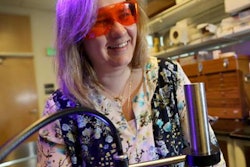Two grants from the U.S. National Institutes of Health will allow researchers from the Oregon Health & Science University (OHSU) School of Dentistry to explore novel, longer-lasting composites.
Principal investigators Carmem Pfeifer, DDS, PhD, an assistant professor of biomaterials and biomechanics, and Jack Ferracane, PhD, the chair and a professor of restorative dentistry, will receive more than $2.4 million over five years to work independently toward the common goal of doubling the service life of dental composites. The grants come from the NIH's National Institute of Dental and Craniofacial Research.
Their study is titled "Tertiary Methacrylamides and Thiourethane Additives as Novel Dental Composites."
Current composite restorations are particularly susceptible to hydrolysis or are attacked by the naturally occurring enzymes that produce bacteria in peoples' mouths, Dr. Pfeifer noted. The OHSU School of Dentistry study will use new compounds to replace the current material based on methacrylates. The new materials will be more resistant to hydrolysis and enzymatic attack.
The new materials won't require that the dentist change operatory procedures before placing the composite, Dr. Pfeifer explained. These materials will still be activated by blue light and placed the same way as before. The study will incorporate prepolymerized additives to make the new materials stronger. Then the OHSU team will test the basic mechanical resistance of the new materials as a screening tool, and use bioreactors to simulate the conditions in the oral environment.
Dr. Pfeifer also recently received a three-year $429,600 NIH grant for her study "Thiourethanes as Low-Stress Modifiers in Dental Composites."



















